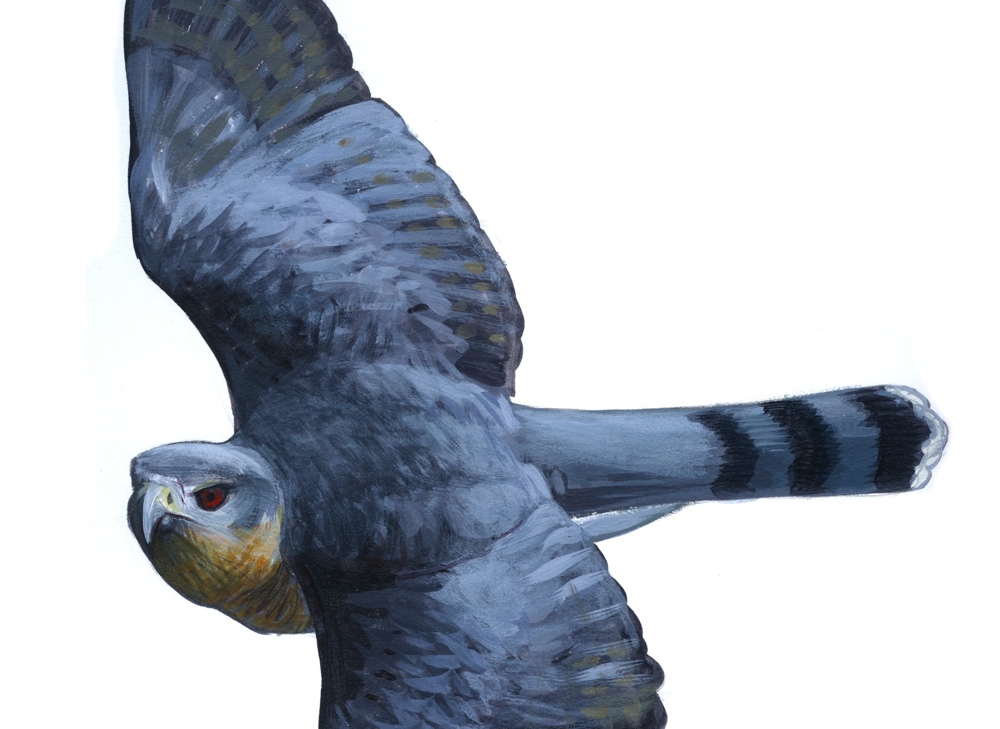How to Thwart a Hawk From Attacking Pigeons Im Feeding
I saw a Cooper's Hawk catch a Rock Pigeon a few days ago. By itself that experience is noteworthy – a Rock Pigeon is a big bird for a Cooper's Hawk to handle – but more remarkable was the way the attack unfolded.

I was just finishing a birding walk at a local farm. Ahead of me was a small field, recently plowed, where twenty or so Rock Pigeons were foraging on the ground. Another bird was about ten feet up and flying across the field toward the flock. I didn't give it much thought. It was just another pigeon making the sort of relaxed, floating approach that pigeons do – or so I thought. Except that when this "pigeon" got within about five feet of the pigeons on the ground it suddenly transformed into a Cooper's Hawk!
The pigeons all burst into flight, but much too late. The hawk was already among them and knocked one out of the air in a cloud of feathers.
I was stunned. It's always shocking to witness a life-and-death drama like that, but a few seconds earlier I was simply seeing a pigeon flying in to join the flock when suddenly everything changed. And I wondered: How could I (and, more amazingly, a whole flock of pigeons) misidentify a Cooper's Hawk like that? The hawk was in plain view, flying over an open field. Admittedly I did not give it much attention in that first glance, but there was nothing that drew my attention. It "registered" as a pigeon, which made sense for a bird coasting across the field. The pigeons must have seen it the same way, because normally they would not just sit on the ground and allow a Cooper's Hawk to fly into their midst.
I considered the possibility that this was just a very lucky Cooper's Hawk taking advantage of an opportunity with a flock of pigeons that either didn't see it or didn't think it was a threat. But I can't imagine a whole flock of pigeons not seeing this bird approaching, nor letting it get that close under any circumstances.
I think the most plausible explanation is that the pigeons saw the bird but didn't recognize it as a hawk (the same thing that happened to me), and that this was due to some deliberate mimicry by the Cooper's Hawk, a brilliant bit of acting.
Predators rely on surprise, so if there is any way they can camouflage or "disguise" themselves and sneak up on their prey, it makes sense that they would take advantage of that. The resemblance of Zone-tailed Hawk to Turkey Vulture is often cited as an example of this aggressive mimicry. Potential prey species don't react to the common and benign presence of Turkey Vultures overhead, and a Zone-tailed Hawk can hide among the vultures and drop onto unsuspecting prey.
Zone-tailed Hawks are born looking like Turkey Vultures, and they take advantage of it. I believe this Cooper's Hawk was doing something more deliberate and active, transforming its wingbeats and flight actions to mimic another bird.
I've seen raptors mimic the flight style of other species before. Several times at Cape May, New Jersey I saw Merlins adopt the undulating flight style of a Northern Flicker, or the irregular flicking wingbeats of a Mourning Dove. It was only for a second or two and always when they were low and actively hunting.
This behavior is so infrequent, and so brief, that I suspect it will be very hard to confirm that it is deliberate aggressive mimicry, but I believe that all of these predators are trying to disguise themselves in order to sneak up on their prey.
Source: https://www.sibleyguides.com/2014/11/a-hawk-in-pigeons-clothing/
Post a Comment for "How to Thwart a Hawk From Attacking Pigeons Im Feeding"